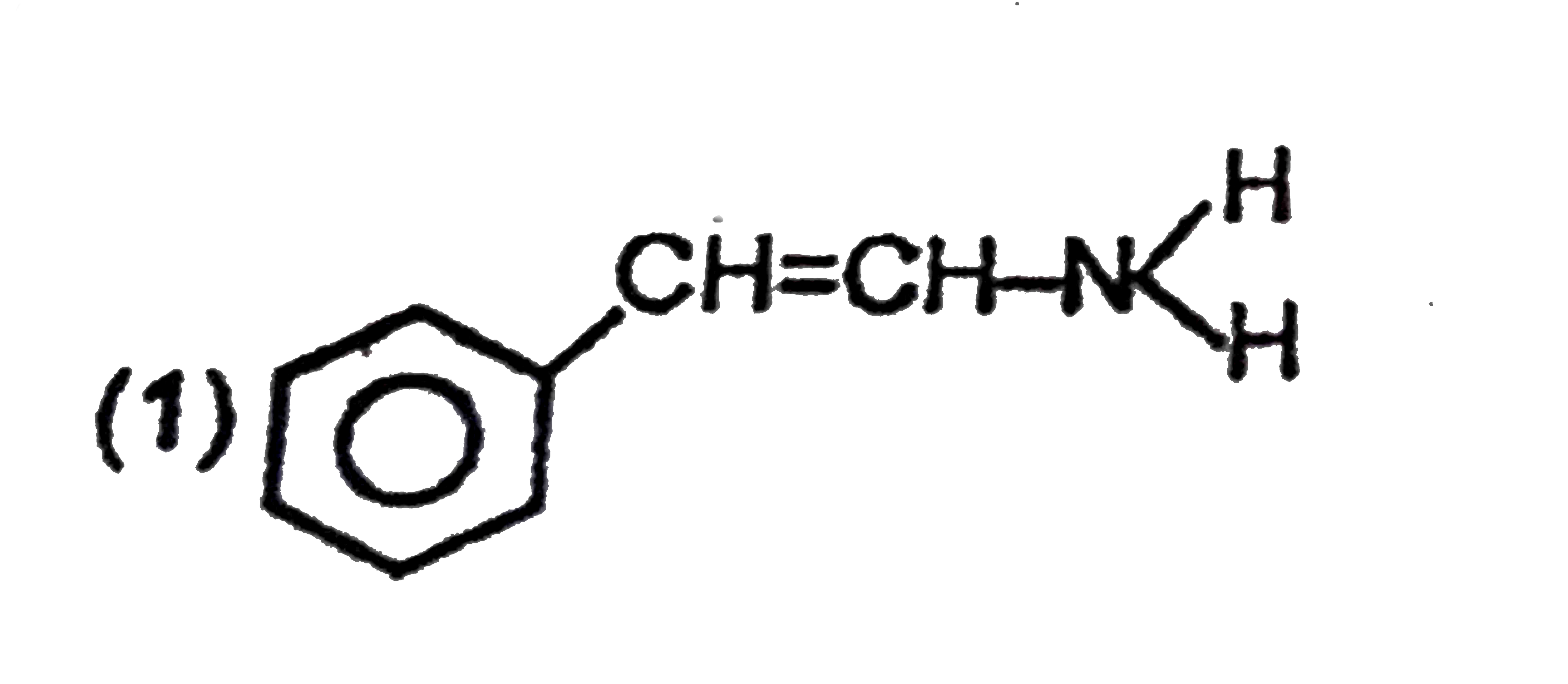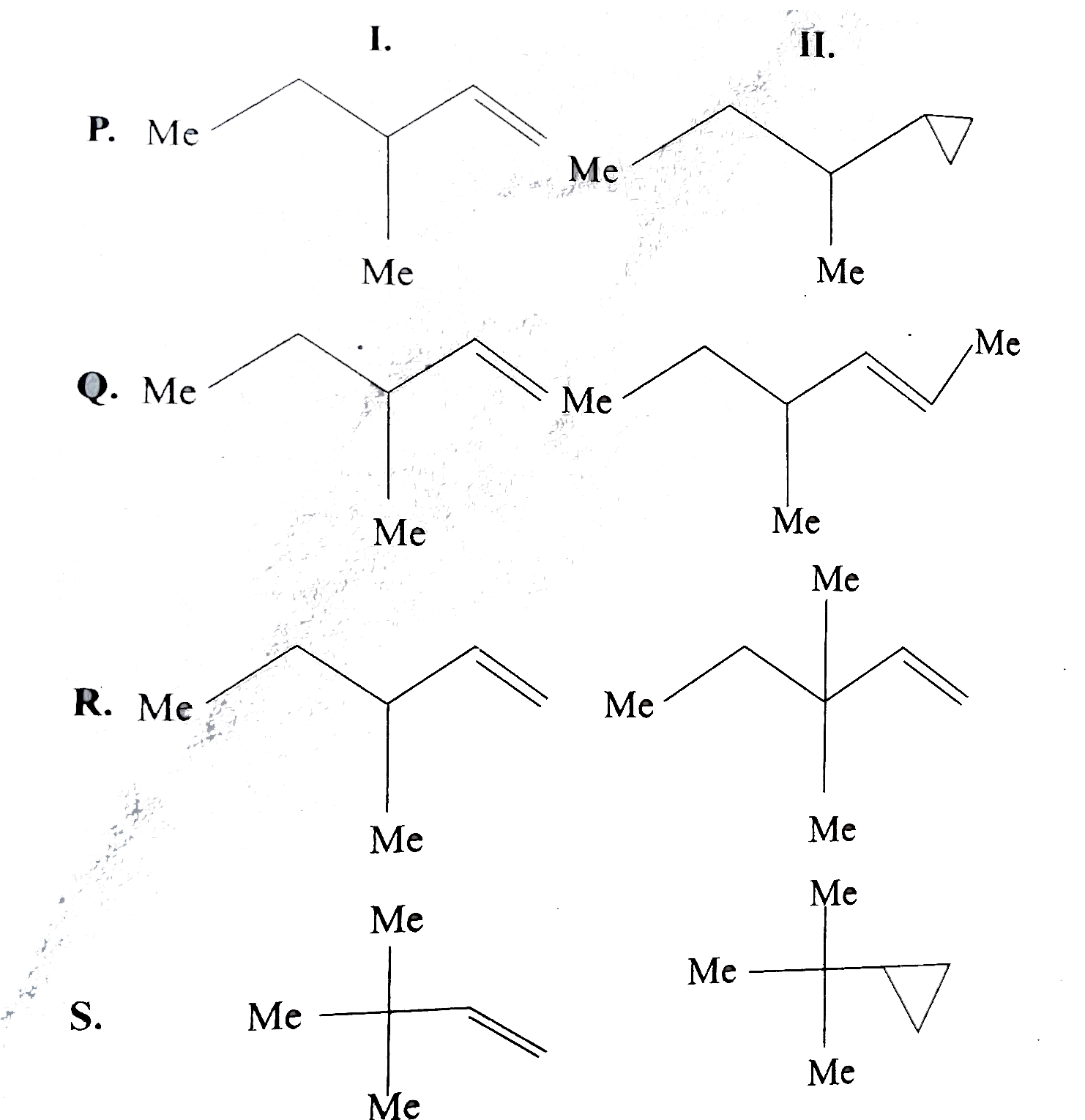Identify A,C6H11N, for which the given information is availabel .
(i)Baeyer reagent - No test (ii)Ph−SO2Cl→acidic compound soluble in KOH
(ii) Dissolves in aq. HCl (iv)Optically active




The correct Answer is:4
Only (4) gives the above characteristic tests.
Topper's Solved these Questions
- BOOK - RESONANCE ENGLISHCHAPTER - NITROGEN CONTAINING COMPOUNDSEXERCISE - ORGANIC CHEMISTRY(Nitrogen containing Compounds)30videos
NITROGEN CONTAINING COMPOUNDS
- BOOK - RESONANCE ENGLISHCHAPTER - NITROGEN & OXYGEN FAMILYEXERCISE - Part-III Practice Test-2 (JEE (Advanced Pattern))23videos
NITROGEN & OXYGEN FAMILY
- BOOK - RESONANCE ENGLISHCHAPTER - NUCLEAR CHEMISTRYEXERCISE - STAGE-II1videos
NUCLEAR CHEMISTRY
Similar Questions
Compound (A), C8H6NOBr, is optically active. Reduction of (A) gives (B) which reacts with nitrouos acid to form (C), dihydric alcohol. Benzene sulphonyl chloride reacts with (B) to give a product soluble in NaOH. Hydrolysis of (A) gives (D) which is an optically active acid. (A) does not give any precipitate with aqueous AgNO3 . Controlled oxidation of (A) gives monobromo benzoic acid. Compound (A) on reaction with Br2/Fe gives only one compound. Identify (A), (B), (C), and (D).
View SolutionThree compounds A,B and C all have molecular formula C5H8 All the compound rapidly decolourise Br2 in CCl4. All three give a position test with Baeyer's reagent. And all the three are soluble in cold conc. H2SO4. Compound A gives a precipitate when treated with ammonical AgNO3 solution. but compounds B and C do not compounds A and B both yield pentane (C5H12) when they are treated with excess H2 in the presence of Pt catalyst. Under these conditions, compound C absorbs only one mole of H2 and gives a product with the formula C5H10 On oxidation with hot acidified KMnO_4, B gave acetic acid and CH_3CH_2COOH. Identify compounds A, B, and C.
View SolutionA hydrocarbon 'A' (C4H8) on reaction HCl gives a compound 'B', (C4H9Cl) which on reaction with 1 mol of NH3 gives compounds 'C' (C4H11N). On reacting with NaNO2 and HCl followed by treatment with water compound 'C' yields an optically active alcohol, 'D'. Ozonolysis of 'A' given 2mols of acetyldehyde. Identify compound 'A' to 'D'. Explain the reaction involved.
View SolutionWhich out of the following is : ( a) the weakest acid (b) the strongest acid ?
(i) C2H5OH (ii) CH3COOH (iii) C6H5OH (iv) H2OView SolutionWhich out of the following is : ( a) the weakest acid (b) the strongest acid ?
(i) C2H5OH (ii) CH3COOH (iii) C6H5OH (iv) H2OView SolutionWhich out of the following is : ( a) the weakest acid (b) the strongest acid ?
(i) C2H5OH (ii) CH3COOH (iii) C6H5OH (iv) H2OView SolutionCompound A is chiral and has the molecular formula C8H11N. When A reacts nitrous acid then occurs a brisk evolution of N2 gas. A dissolves in aqueous HCl. What is the identity of A ?
View SolutionIdentify correct order of pH of the given solutions at 25∘C
(I) NH4Cl (II) Na2CO3 (III) K2SO4View SolutionAn optically inactive compound (A) having molecular formula C4H11H on treatment with HNO2 gave an alconot (B) which on heating with conc. H2SO4 at 440 k gave an alkene ( C) . ( C) on treatment with HBr gave an optically active compound (D ) having molecular formula C4H9Br Identify (A) ,(B) ,(C) and (D).
View SolutionCarbene intermediates are produced by the photolysis of diazomethane (CH2N2) or kenene (CH2=C=O). They are also produced by the reaction of CHX3 with base or by Simmons-Smith reaction. There are two types of carbenes, singlet and triplet. They are so called due to their spin state.
An optically active alkene (I) with lowest molecular mass on hydrogenation gives optically inactive alkene, but on insertion of methylene carbene (:CH2) in (I), it gives optically active compound (II). The compounds (I) and (II) are :
 .View Solution
.View Solution

